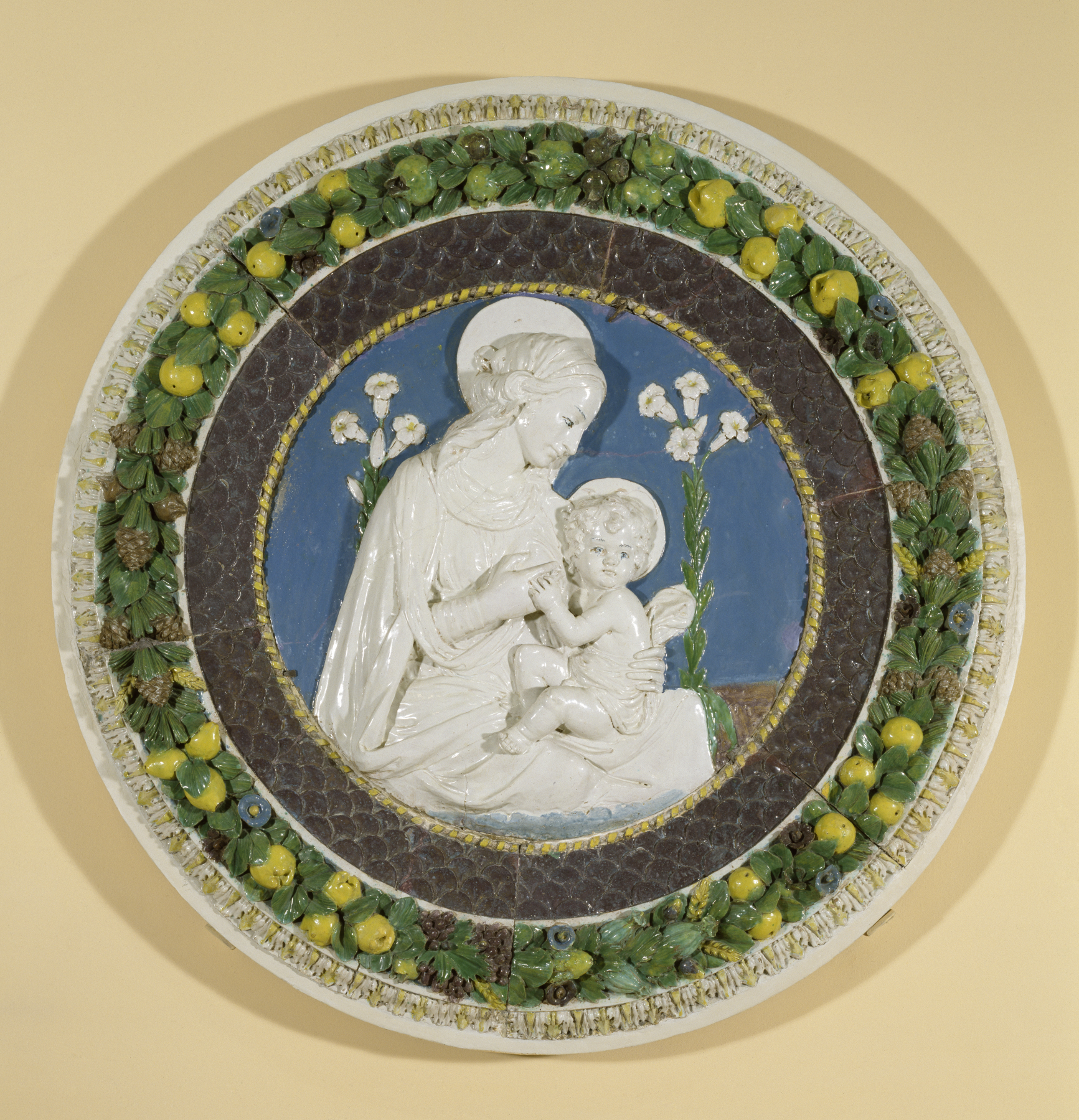The Virgin of the Lilies
(Renaissance Europe )
The style of this "tondo," or medallion, was developed by Luca della Robbia (ca. 1400-82) who invented this type of brightly colored glazed terracotta (baked or fired clay) relief-inspired by maiolica-and it shows the continued admiration of his works long after his death. Such medallions were intended for placement in an architectural setting like this.
The lilies placed behind the Virgin Mary and the Christ Child symbolize her purity. She offers Christ her breast for nursing, emphasizing Christ's humanity.
Provenance
Provenance (from the French provenir, 'to come from/forth') is the chronology of the ownership, custody, or location of a historical object. Learn more about provenance at the Walters.
Raoul Heilbronner, Paris; Henry Walters, Baltimore, 1902, by purchase; Walters Art Museum, 1931, by bequest.
Geographies
Italy, Florence (Place of Origin)
Measurements
52 3/8 in. (133 cm)
Credit Line
Acquired by Henry Walters, 1902
Location in Museum
Accession Number
In libraries, galleries, museums, and archives, an accession number is a unique identifier assigned to each object in the collection.
In libraries, galleries, museums, and archives, an accession number is a unique identifier assigned to each object in the collection.
27.217


